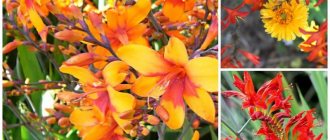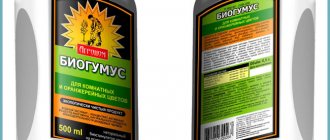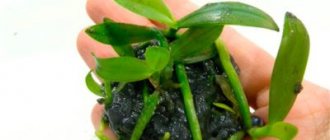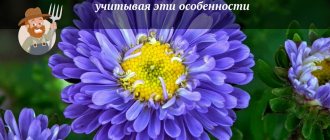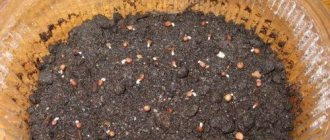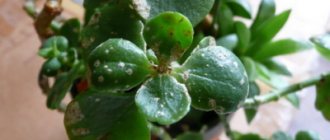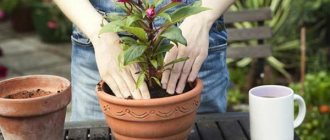Description of varieties of perennial asters
There are about 500 species of perennial asters, and even more varieties of flowering crops have been bred from them. They differ in the height of the bushes, flowering time, the size and shape of the inflorescences and the color of the petals.
Alpine
This is a dwarf variety with a compact rosette and single buds with a diameter of 3-6 cm. The height of the plant does not exceed 30 cm. It looks impressive, but needs frequent updating.
It blooms in early summer and the buds stay on the bushes for about a month. The best varieties: snow-white Stained Glass, blue Gloria, light purple Goliath.
Italian
The variety, also called chamomile, can reach a height of 30 to 60 cm. Depending on the variety, it blooms in summer or early autumn.
Its inflorescences reach up to 5 cm in diameter. The petals are painted in lilac, pink, and dark blue tones. The best varieties: Gnome, Herman Lene, Kobola, King George.
New England (American)
This is a tall plant, the height of which can reach more than 160 cm, and about 80 cm in diameter. It has strong, strong, erect shoots that do not need support or garter.
The crop blooms in September, and the last buds leave after the onset of frost. The best varieties: Bars Pink with carmine pink petals, deep purple Constance, and Gloire de Kronstadt with large purple inflorescences.
New Belgian (Virginian)
This is a medium-sized variety, the height of which reaches 60-140 cm. The plant develops quickly and blooms in the first year after planting, around the beginning of September.
The shoots of the crop are not very stable and need to be tied to a support. The following varieties are in demand: red Royal Ruby, lavender Bridgette and White Lady with snow-white petals.
Bessarabian
The variety reaches up to 75 cm in height. It is valued for its abundant and long-lasting flowering.
It is distinguished by unusual buds, which consist of a brown core and purple petals.
Bush
These are low-growing flowers, the height of which does not exceed 50 cm. The buds open in mid-late August and last for about 1-1.5 months.
The best varieties are considered:
- raspberry red Jenny;
- dark red Stralight;
- snow-white aster Apollo;
- blue Blue Lagoon.
The most frost-resistant and unpretentious variety that can be grown in the northern regions.
Agerate-shaped
The plant reaches up to 150 cm in height. Its inflorescences resemble daisies in appearance, collected in corymbs. They stay on bushes from mid-August to the end of October.
The petals are painted in lilac or snow-white tones. The variety is ideal for meadow-type flower beds.
Globular
The variety is distinguished by an unusual crown, which takes the shape of a regular ball. The plant reaches up to 50 cm in height, and is densely covered with medium-sized inflorescences. The petals are colored blue, pink and purple with a yellow center.
The best varieties are recognized:
- Henry.
- Magic.
- Aspatio.
- Marmara.
Terry
This variety is distinguished by large, multi-petaled inflorescences that resemble bright balls.
The size of the plant depends on the subspecies. The best varieties: Bon-Bon, Erfurt dwarf.
Heather
The plant is distinguished by the pyramidal shape of the bushes and shoots sloping towards the ground. In September, the branches are densely covered with small pink or snow-white inflorescences. The shoots reach up to 100 cm in length, and they quickly grow in different directions. And the culture covers vast areas in a short time, creating a dense, floral carpet.
Popular varieties:
- Pink cloud.
- Snow avalanche.
- Blue Star.
Tatar
The aster species is a medicinal plant and grows up to 1.5 m in height. It has small, blue or pink inflorescences with a bright yellow core.
The only variety that thrives in the shade and in areas with moist soil. Can be planted on the banks of an artificial or natural reservoir.
Video about the best way to plant asters and how to care for them
This video gives advice from a gardener on how best to plant flowers in your garden. What are the best conditions to create for them, and how to care for them.
In general, almost everything that our article is about today, only more concisely. I hope that the video will be quite useful for you in this regard.
It also briefly talks about what varieties exist and how best to plant them depending on this. There are also many beautiful photographs of this autumn beauty blooming.
Plant conditions
Perennial asters (the varieties whose photos are given in the material are considered the best) are unpretentious plants. But in order to achieve long and abundant flowering from crops, you will need to create a comfortable environment for them. To do this, you should plant flowers on soil with a certain composition, and provide them with proper care.
Lighting
Asters are light-loving flowers, and they should be planted in the most illuminated places. The plant will take root in light partial shade. But their flowering will come later and will be shorter.
Temperature
Perennial asters (varieties, photos and their descriptions are presented later in the article) are heat-loving plants. And they develop well at temperatures of +15...+30 °C. Flowers can also tolerate stronger heat, but only if they are watered regularly.
The article contains photos of popular varieties of perennial asters.
The crops are frost-resistant and overwinter in open ground, but it is worth preparing them for the cold period. To do this, choosing a dry and sunny day in October-November (after the onset of frost), you should cut off the above-ground part of the plant, leaving stumps up to 4 cm high.
Then sprinkle the bush with a 5-centimeter layer of sawdust, compost or fallen leaves. Mulch will prevent plants from freezing and provide them with useful elements in the spring. Young seedlings should be additionally covered with spruce branches.
Humidity
Aster develops better in conditions of high humidity. And in dry and hot weather it is worth regularly watering using the sprinkling method.
Soil and drainage
Despite their moisture-loving nature, perennial asters cannot tolerate stagnant moisture at the roots. They cannot be grown in lowlands, wetlands or places with close groundwater. It is better to plant the plants on a hill or arrange drainage in the flower garden in advance.
Perennial asters develop better in loose, fertile soil. Breathable loam with a neutral or slightly alkaline reaction is ideal for them.
It is worth preparing the area for the flowerbed in advance, following these instructions:
- Dig up the soil to a depth of 20-25 cm. Remove all plant debris and weeds.
- Add to each sq. m of soil 10 g of superphosphate, 8 g of potassium chloride. From organic matter, you can use compost (5 kg) and wood ash (200 g).
- If the soil is acidic, then add dolomite flour or fluff lime (400 g per 1 sq. m) into it.
- If there was no time for autumn preparation, then you can apply fertilizers in the spring. Otherwise, in April it is enough to simply dig up the soil to a depth of 18-20 cm.
Plants can be planted on the site no earlier than a month after applying fertilizers.
Watering
Asters are drought-resistant plants, but in hot weather they need to be watered regularly. With insufficient irrigation, the number of inflorescences is significantly reduced. And if there is no rain, then you will need to water the crops once every 10 days.
The next day after irrigation or precipitation, the soil must be loosened. Otherwise, a dense crust will form on its surface, blocking the access of air to the roots. During the loosening process, it is worth removing weeds that can be sources of diseases and pests.
To reduce the care of asters, you need to mulch the surface of the flower garden with organic matter. This technique will help reduce the amount of watering, loosening and weeding. But mulch tends to be washed out by water, so its layer needs to be renewed periodically.
Watering
Despite the fact that this flower crop is particularly resistant to drought, it requires watering.
Watering should be done moderately as the soil dries. On average, in moderately hot weather, once every 5-7 days is enough. The planting site should not be near groundwater, otherwise this may cause the root system to rot. Which will have a detrimental effect on the plant as a whole.
The water should not be cold. She needs to stand up. Rainwater works well. To do this, you can place empty barrels on the site where water will be collected when it rains.
If summer is accompanied by high temperatures, mulch the soil to help retain moisture. Sawdust or straw are perfect for this.
Particular attention should be paid to it during the formation of inflorescences, otherwise you may be left without lush, bright bushes.
Step-by-step instructions for growing
Perennial asters (varieties, photos, characteristics are described in the article for reference) are usually grown from seeds. And they can be planted immediately in open ground (in a training bed). The event should be started in mid-spring, when the ground has warmed up sufficiently and the air temperature does not drop below +10 °C.
And in the process you need to adhere to the following algorithm:
- Level the surface of the soil and make grooves in it with a depth of 4 cm. Maintain a distance of 15-30 cm between rows, depending on the growth of the plants.
- Water the bed generously with warm water. Distribute the seeds evenly along the grooves and sprinkle them with soil. The embedment depth should not exceed 0.5 cm.
- Mulch the surface of the flower bed with peat, straw or sawdust.
- If there is a risk of return frosts, then it is worth covering the flower garden with lutrasil or film.
At temperatures above +20 °C, seedlings appear within 10-12 days. In the future, the plants need to be provided with regular care, and in the fall they need to be transplanted to a permanent place. Such crops will bloom only after 1-2 years.
Wintering
Perennials are frost resistant. They do not require any troublesome preparations for the winter period. They will tolerate it just fine.
After the first night frosts, you need to cut off the entire upper part of the bush, leaving 4 cm of stumps. As a rule, depending on the region, this time falls in October - November. Pruning is done in dry, not rainy weather.
Create a mulch layer using sawdust, dry leaves, or compost. In the spring it will also serve as a good fertilizer. If the shoots are young, you can additionally cover them with spruce paws or a mountain of dry leaves. This will help them not freeze until snow cover appears.
Flowers survive winters safely, so don’t worry about this autumn beauty.
Plant propagation methods, instructions
Perennial asters, photos of which are given in the material, can be propagated by dividing the bush and by green cuttings. These methods are suitable for all varieties and types of plants, but they have their own nuances.
Dividing the bush
This propagation method is suitable for adult plants. And it can be combined with a planned transplant. But it is worth considering that varieties that bloom in autumn are best divided in spring. Conversely, varieties that produce buds in the summer should be propagated in the fall.
The process itself is not particularly complicated and consists of the following steps:
- For new plants, you need to prepare the site in advance and add fertilizer to the soil. Make holes with a depth of 20-25 cm. Depending on the growth of the plants, maintain a distance of 20-50 cm between them.
- Dig up the mother bush, carefully clean its roots from the old earthen lump. If necessary, prune damaged shoots and weak shoots.
- Using a shovel or knife, divide the plant into several parts. Each division should contain 3-5 shoots, 1-2 growth points and a sufficient number of roots. Sprinkle the cut areas with chiseled activated carbon or wood ash.
- Place the plants in the center of the recesses and slightly straighten their roots. Fill the voids with soil and compact it slightly. It is important that the growing points of the divisions are buried in the soil at the same level as those of the mother plant.
- Water the flower bed generously. When the moisture is absorbed, add soil if necessary.
- It is advisable to mulch the surface of the flower bed with a centimeter layer of peat, straw or rotted compost.
If the site has been properly prepared, then you will not need to feed the flowers for 1-2 years.
Propagation by cuttings
Perennial asters can be cut from May to August. And for propagation it is worth using the apical green shoots. Before the event, you should prepare a training bed by choosing a lighted area for it, but without direct sunlight.
You will also need to make a substrate by mixing peat with turf soil and sand in equal parts.
During the process you must adhere to the following instructions:
- Having chosen strong shoots up to 15 cm in length, cut them with a sharp knife. Moreover, the cut should be made at an angle of 45°. Remove the lower leaves, leaving only the green top.
- Place the cuttings in a growth stimulator (“Epin”, “Zircon”) for 10-12 hours, burying them in the liquid by 2-3 cm with the lower cut.
- Plant the shoots in a training bed at a slight slope and water well.
- It is advisable that the temperature near planting be maintained within +22…+25 °C. You can stretch the film over the ridge and open it slightly in hot weather.
- During the process, it is important to regularly spray the soil with warm water, preventing it from drying out. You should also remove condensation from the shelter, since excess moisture is detrimental to the plant.
By autumn, the cuttings will take root and can be planted in a permanent place. Before winter, plants should be prepared by sprinkling them with a thick layer of peat or fallen leaves and covering them with lutrasil or spunbond. With the arrival of spring, remove the cover and remove the mulch so that the flowers do not dry out.
How to plant asters correctly, and what planting methods exist
This is a flower crop that can be planted in the ground directly with seeds or as ready-made seedlings.
Planting seeds directly into the ground is an easier way. This can be done in the spring in April - May, or in the winter in November.
First, decide what bushes you want to see, because this plant has a wide variety of colors of inflorescences, bush shape and height. Pay attention to the packaging with planting material. There should be no traces of smudges on it, the text is not blurred and is clearly readable.
When planting in the spring, the ground will already thaw and the temperature will be consistently warm. It is recommended that it be above + 10 degrees. Depressions are made in the garden bed, on average about 4 cm, and seeds are placed in them. You need to sprinkle soil on top, water it well and mulch the soil so that the moisture is retained longer. If sudden cold snaps occur, cover future flowers with film.
Depending on the variety, you will see buds 80-90 days after sowing. But if this is a late type, then this period may occur after 4 months.
Seeds sown before winter will immediately begin to grow with the onset of spring. They will have enough snow cover for wintering. They will swell and sprout early. The main thing is to sow at the right time; the ground should already be slightly frozen so that they do not rot. You need to sow in holes 2 cm deep, lightly sprinkled with soil and mulched with peat on top. This will create a kind of insulation. Increase the number of seeds by 2 times, because only the strongest of them will sprout.
Of course, the seedling method will be the most reliable of the above. It is more labor intensive. But in this way, you will get results in the garden earlier.
The seeds must first be prepared. We need to start doing this in March. First, they must be disinfected against possible diseases. To do this, soak them in a weak solution of manganese and leave for 1.5-2 hours. Next, rinse them and place them in damp gauze; they should germinate in a warm place. As a rule, this takes 5-7 days.
Take care in advance of the containers in which the seedlings will grow. Plastic or wooden containers work well. They also need to be disinfected. The first layer should be drainage. You can use small crushed stone or broken brick, they will ensure air permeability of the soil. The soil should contain admixtures of peat and sand. The consistency will be loose and light. The soil contains pathogenic microorganisms invisible to the eye. Therefore, spill it with a hot solution of manganese.
Make holes in the ground 2-3 cm deep and place the sprouted seeds in them. Sprinkle sand on top and spray with water from a spray bottle so as not to wash out the holes. Cover the container with plastic wrap, creating a greenhouse effect. The room temperature should be + 22-23 degrees. Soon you will see the first shoots.
After 3-4 leaves appear, you need to pick the seedlings. The soil should be the same, just add a little more wood ash. Water as the soil dries out. The first fertilizing with fertilizers should be applied 7 days after the dive.
The seedlings will be ready for planting when at least 7-8 leaves appear on them, and the temperature at night is above +5 degrees. The holes are made 6-7 cm deep, the seedlings are placed together with a lump of earth.
In the future, the plant will grow unpretentiously. Watch for weeds and remove them so they don't devastate the soil.
Pest and disease control
Perennial asters (varieties, photos, features are described in the material for reference) have strong immunity and rarely get sick.
But in unfavorable conditions, crops can be affected by the following diseases and pests:
| Symptoms | Treatment | |
| Blackleg | A fungal disease that causes thinning and blackening of stems at the base. | At the first signs, you need to treat the soil with a solution of potassium permanganate or Fitosporin. Repeat treatments every 7 days until cured. |
| Fusarium | A fungal disease that occurs from excess soil moisture. The disease appears as dark stripes on the leaves and stems of the plant. Over time, the foliage turns yellow and the inflorescences wilt. | Regular lime helps fight fusarium. It needs to be scattered around the flower bed. |
| Septoria | The disease is provoked by waterlogging of the soil and high air temperature, and it can be recognized by dark brown spots on the foliage. | To get rid of septoria, you need to spray the flowers with a solution of Bordeaux mixture every 7 days until the symptoms disappear. |
| Jaundice | A viral disease transmitted by pests. The leaves turn yellow and the buds stop developing. | The disease cannot be treated, and affected specimens will need to be destroyed. |
| Aphid | Small brown or green pests that accumulate in the axils of leaves and feed on their sap. | To kill insects, you should use Aktara insecticides. |
| Spider mites | The pest is difficult to notice with the naked eye. But its appearance is indicated by a thin sticky web that accumulates in the axils of the leaves. | It is worth spraying the flower garden with an alcohol solution, infusion of garlic or onion. The insecticide "Karbofos" helps against a large colony. |
The flower garden should be treated with insecticides and fungicides early in the morning. And for the procedure you should choose a dry, windless day. Since the drugs are toxic, you need to wear gloves, long sleeves and a respirator before use.
Fertilizers for plants
Perennial asters spend a lot of energy on flowering, and they need additional nutrition.
So it is advisable to fertilize crops at least 2-3 times per season, adhering to the following scheme:
- In mid-May, add complex mineral fertilizers rich in nitrogen to the flower garden. The element is necessary for the normal development of green mass.
- During budding, add fertilizer containing potassium and phosphorus.
- At the beginning of flowering, fertilize the plants with potassium compounds.
Any fertilizer can be applied only after abundant watering, so that the compounds do not burn the roots of the plants. It is better to choose a cloudy, cool day for the event. Or you will need to do it early in the morning.
Mineral mixtures
At the beginning of the growing season, you can feed asters with urea or saltpeter. During budding it is worth using ammophoska, nitrophoska, crystallin or superfsofat. When buds form, you need to add potassium chloride and potassium sulfate.
It should be remembered that excess fertilizer is harmful to flowers. And it is necessary to apply half the dose of fertilizing that is indicated by the manufacturer. It is advisable to dilute the preparations with water and use them in liquid form.
Organic fertilizers
Asters should not be fed with organic matter. And manure is especially contraindicated for plants. But you can use a solution of mullein or bird droppings. These fertilizers contain a lot of nitrogen and should only be applied at the beginning of the growing season. And they must be diluted in a ratio of 1 to 10.
It is also worth using compost or humus to mulch the flower bed; a layer of materials will nourish the plants as they decompose, and at the same time help retain moisture at the roots.
Proper care during the period of growth, development and flowering
Many people like to grow these flowers for their unpretentiousness. After all, at minimal cost, you will get beautiful, bright flower beds.
They are drought-resistant plants. High humidity and dampness are harmful to them. Therefore, loosen the soil after each topping, even if it has rained or applied fertilizing.
In hot weather, it is better to water not often, but generously.
Fertilizers should be applied at least 3 times per season. At the time of rooting, the formation of buds and during the flowering period itself. Then the bush will be lush with a large abundance of inflorescences.
Check the bushes for insect pests. Unfortunately, this plant is also susceptible to various diseases. Timely inspection and identification of them will help to take timely measures and prevent the bush from dying.
Use in landscape design, examples
Perennial asters will be an excellent plant for the background of a flower garden. Tall varieties of the crop can be used to create hedges. Small plants should be used to decorate garden paths and borders. Also, dwarf varieties are suitable for growing in rock gardens, rock gardens, and in the foreground of flower beds.
It is better to plant perennial asters next to carnations, peonies, lilies and roses. But they are not suitable for proximity to garden crops (potatoes, tomatoes) and conifers, because of which the flowers begin to hurt.
Flower propagation
Dividing bushes into cuttings is carried out in early spring or immediately after the onset of the first frost. The root of the mother bush is divided into 3-4 parts using a sharp knife. Breaking the bush by hand is allowed. Each new shoot should have several threads of roots and at least one or two growing points.
The height of the cut stems should not be more than 5-7 cm. In this form, the plant can be immediately planted in moistened, disinfected open ground or in a pot for further cultivation in a place distant from the mother bush.
Where to buy and cost of the plant
Seeds of perennial asters can be purchased in flower shops and special departments of supermarkets. When choosing planting material, it is important to pay attention to the expiration date. And you should not take seeds collected more than 1 year ago, as their germination rate is minimal. They must be dry and hermetically sealed.
The cost of seeds is low; on average, you need to pay 25-40 rubles for a package weighing 0.1 g. Ready-made seedlings are more expensive, and 1 copy will cost 300-500 rubles.
Perennial asters will be an excellent decoration for any site. Numerous varieties of crops look impressive and fit into any landscape, as confirmed by photo flower gardens. At the same time, the plant is unpretentious, frost-resistant, and caring for it will not cause much trouble.
The best places to plant flowers in the garden
Single-row plantings along paths, fencing flower beds and ponds are the best places to plant low bushes of perennial asters. Spherical, medium-sized plants will decorate flower beds, rock gardens and rocky hills.
Tall shrubs will delight owners before entering the garden or courtyard of the estate. A combination of different-sized and multi-colored plants can create unusual compositions and decorate the garden in the fall, when there are no more summer plants and flowers in the gardens.
Our favorite “September”, and some even “November”, are very easy to care for, but very diverse and beautiful. Thanks to the fact that the assortment of perennial asters at sellers is replenished with new species every year, autumn flower beds and gardens are becoming more and more beautiful.
Early flowering aster bushes are not so noticeable against the backdrop of the spring colors, but they are also valued by flower growers. Even the most unsightly piece of land can be decorated with these flowers. After all, even in late autumn there should be beauty next to people.
